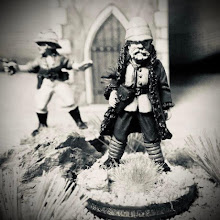The 5th New York Veteran Volunteer Infantry Regiment was organized as a Battalion of four Companies with men from the old 5th New York Volunteer Infantry Regiment, "Duryea's Zouaves." As with other Veteran Volunteer Regiments organizing in New York City from June to October 1863, the Regiment was completed by consolidating the 31st and 37th New York Veteran Regiments which were also trying to organize into the one Regiment. The consolidated Battalion was mustered into United States service on October 14, 1863, at New York City, New York, under the command of Colonel Cleveland Winslow, for three years service. This small battalion was later increased during the war by the consolidation of the Veterans from the 12th New York and the 14th Brooklyn Infantry Regiments whose terms of service had not expired when those regiments were mustered out of service later in 1864.
On October 27, 1863, the Battalion left from New York City, New York, and moved to Washington, D.C., arriving there within a few days. Upon arrival they were assigned as part of the garrison of the town of Alexandria, Virginia, under the XXII Corps in the Department of Washington. They would serve in the defenses of this area until May 1864, when they received orders to join the Army of the Potomac as part of the 1st Brigade, 1st Division, V Corps, however they were shortly thereafter transferred to the 1st Brigade of the 2nd Division of the same Corps, and with this Brigade would serve until June 1865.
The Regiment was engaged in the Battles around Cold Harbor from May 31 to June 12, continuing in the advance of the Army of the Potomac against Richmond and Petersbury they found themselves engaged in the siege of the latter place from June 16, 1864, until April 2, 1865. During the Siege they took part in the operations against Weldon Railroad in June and August 1864, the engaged at Poplar Springs Church from September 29 to October 2, and in the actions near Hatchers Run in late October 1864. From February 5 to 7, 1865, they were engaged again in the Hatcher's Run area. It was during this time that on June 2, 1864, the members of the 12th New York and 14th Brooklyn Regiments were merged into the Regiment, the 12th becoming Companies F and E, and the 14th Companies G, H, I, & K.
From March 28 until April 9, 1865, the Regiment was actively engaged in the closing operations between the Army of the Potomac and the Army of Northern Virginia. On March 29, 30, and 31st, they were engaged along the White Oak Road, before taking part in the assault upon the Confederate forces at Five Forks on April 1. This assault forced the fall of Petersburg, and the ensuing pursuit of the Confederate Army to Appomattox Courthouse, Virginia. On April 9, 1865, the Confederate Army of Northern Virginia surrendered to the Army of the Potomac. With the surrender of the Confederate forces the Regiment marched back to Washington, D.C., in May 1865, and on May 23, 1865, they took part in the Grand Review of the Armies of the United States in Washington.



















































.JPG)
.JPG)
.JPG)
.JPG)
.JPG)
.JPG)
.JPG)




.JPG)









